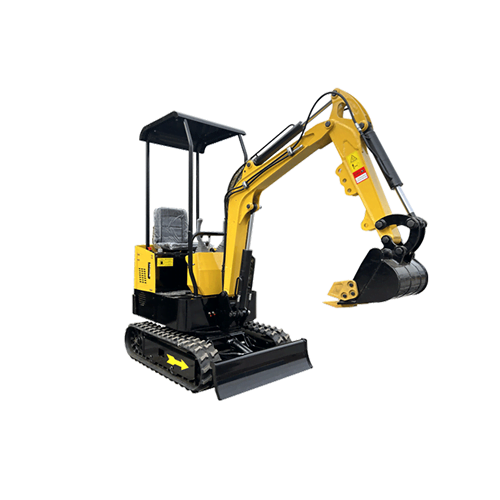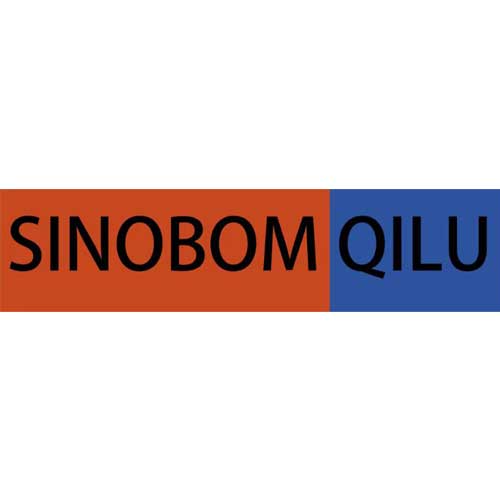Introduzione

Miniere escavatori rappresentano la spina dorsale delle operazioni di estrazione su larga scala in tutto il mondo. In questa guida completa, ci addentreremo nell'affascinante mondo degli escavatori da miniera, esplorando il loro significato, le loro capacità e il loro impatto sull'industria mineraria. Dalla loro evoluzione nel corso degli anni al loro ruolo in varie applicazioni minerarie, scopriremo le complessità di queste potenti macchine che guidano l'estrazione di preziose risorse dalla terra.
L'evoluzione degli escavatori minerari: Dalle umili origini alla tecnologia d'avanguardia
Tracciando l'evoluzione storica degli escavatori minerari, si scopre un viaggio straordinario segnato dall'ingegno e dall'innovazione. Inizialmente concepiti come rudimentali strumenti di scavo, i primi escavatori erano semplici macchine alimentate dal lavoro umano o animale, limitate nelle loro capacità e nella loro efficienza. Tuttavia, con l'avvento della Rivoluzione industriale nel XIX secolo, sono stati fatti passi da gigante nella progettazione e nella tecnologia degli escavatori. Gli escavatori a vapore si affermarono come pionieri, offrendo maggiore potenza ed efficienza nelle attività di scavo.
Tipi e varietà: Capire la diversità degli escavatori da miniera
Esaminando i vari tipi di escavatori da miniera, risulta evidente che ognuno di essi possiede caratteristiche e capacità distinte, adatte a specifiche applicazioni minerarie. Ogni tipo di escavatore da miniera - escavatori idraulici, pale a fune e draghe - offre caratteristiche e capacità uniche, adatte a specifiche applicazioni minerarie. Che si tratti della precisione e della versatilità degli escavatori idraulici, delle capacità di scavo per grandi volumi delle pale a fune o della potenza e dell'efficienza delle draghe, le società minerarie hanno a disposizione una vasta gamma di escavatori tra cui scegliere, che consente loro di ottimizzare le operazioni per ottenere la massima produttività e redditività.
| Tipo di escavatore minerario | Caratteristiche e capacità |
|---|---|
| Escavatori idraulici | Precisione, versatilità |
| Pale a corda | Scavo ad alto volume |
| Dragline | Potenza, efficienza |
Prestazioni e produttività: Come gli escavatori da miniera aumentano l'efficienza delle operazioni di estrazione

La capacità di scavo si riferisce al volume di materiale che un escavatore può rimuovere in un determinato periodo di tempo. Gli escavatori con benne più grandi e sistemi idraulici più potenti hanno in genere capacità di scavo più elevate, che consentono di scavare volumi maggiori di materiale in meno tempo. È influenzata da fattori quali le dimensioni e il design della benna dell'escavatore, la potenza e l'efficienza dell'impianto idraulico e la resistenza dei componenti del braccio e della barra.
L'abilità e l'esperienza dell'operatore dell'escavatore hanno un impatto significativo sulle prestazioni. Un operatore esperto può massimizzare l'efficienza dell'escavatore, ottimizzare i tempi di ciclo e ridurre al minimo i tempi di fermo dovuti a errori o incidenti dell'operatore.
Una manutenzione regolare è essenziale per garantire le prestazioni e l'affidabilità degli escavatori da miniera. Un'adeguata lubrificazione, ispezione e manutenzione di componenti quali impianti idraulici, cingoli e motori sono fondamentali per evitare guasti e tempi di fermo.
Applicazioni in tutto lo spettro minerario: Dalle operazioni a cielo aperto a quelle in sotterraneo
Esplorando la miriade di applicazioni minerarie in cui gli escavatori sono indispensabili, si scopre la loro natura versatile e la loro adattabilità a diversi ambienti e sfide. Dalle miniere a cielo aperto alle cave e alle operazioni sotterranee, gli escavatori svolgono un ruolo fondamentale nel facilitare i processi di estrazione e movimentazione dei materiali.
Estrazione a cielo aperto: Nelle miniere a cielo aperto, gli escavatori sono ampiamente utilizzati per compiti quali la rimozione dello strato di copertura, lo scavo del minerale e il caricamento dei camion. La loro struttura robusta e le elevate capacità di scavo li rendono ideali per gestire in modo efficiente grandi volumi di materiale. Gli escavatori nelle miniere a cielo aperto sono spesso dotati di grandi benne e lunghi bracci per raggiungere la profondità delle fosse di scavo, massimizzando la produttività e riducendo al minimo i tempi di ciclo.
Estrazione di cave: Gli escavatori sono essenziali nelle operazioni di cava per compiti quali lo scavo di banchi, la frantumazione di rocce e il caricamento di materiali. Nelle cave, gli escavatori possono essere dotati di attrezzature specializzate come benne da roccia, martelli idraulici o denti ripper per affrontare efficacemente materiali duri e abrasivi. Inoltre, gli escavatori per le applicazioni in cava possono essere dotati di sottocarri rinforzati e di protezioni per resistere ai terreni accidentati e alle dure condizioni operative comuni negli ambienti di cava.
Miniere sotterranee: Nelle miniere sotterranee, gli escavatori svolgono un ruolo fondamentale in attività quali lo scavo di pozzi, lo scavo di gallerie e la movimentazione del minerale. Gli escavatori utilizzati nelle miniere sotterranee sono in genere più piccoli e più compatti rispetto alle loro controparti a cielo aperto, per poter affrontare gli spazi ristretti e le gallerie anguste tipiche degli ambienti sotterranei. Possono anche essere dotati di una maggiore manovrabilità e di attrezzature specializzate per attività quali lo scavo, la scalatura e la bullonatura dei lavori sotterranei.
Innovazioni e tendenze future: La prossima frontiera della tecnologia degli escavatori per miniere
L'approfondimento delle ultime innovazioni e tendenze tecnologiche che caratterizzano il futuro degli escavatori da miniera svela un panorama ricco di promesse e potenzialità. Mentre l'industria mineraria continua a evolversi, i produttori di escavatori e i fornitori di tecnologia sono in prima linea nel guidare il progresso e l'innovazione.
In sintesi, il futuro degli escavatori da miniera è molto promettente, grazie alla convergenza di innovazione tecnologica, imperativi di sostenibilità e richieste del settore. Abbracciando i più recenti progressi e spingendo i confini del possibile, gli escavatori da miniera sono pronti a svolgere un ruolo fondamentale nel plasmare il futuro dell'industria mineraria per le generazioni a venire.
Conclusione
Gli escavatori da miniera rappresentano l'apice dell'eccellenza ingegneristica nell'industria mineraria, in grado di garantire efficienza, produttività e progresso nelle operazioni di estrazione in tutto il mondo. Dalle loro umili origini al loro ruolo di risorse indispensabili nell'industria mineraria moderna, queste macchine continuano a evolversi e ad adattarsi per affrontare le sfide di un panorama minerario in continua evoluzione. Guardando al futuro, gli escavatori da miniera rimarranno senza dubbio all'avanguardia dell'innovazione, plasmando il corso delle operazioni minerarie per le generazioni a venire.
Domande frequenti
Quali sono i componenti principali di un escavatore minerario?
Gli escavatori da miniera sono generalmente costituiti da un braccio, una mazza (o braccio), una benna, una cabina, cingoli o ruote per la mobilità, sistemi idraulici e un motore. Questi componenti lavorano insieme per consentire all'escavatore di svolgere vari compiti, come scavare, caricare e scaricare materiali.
In cosa si differenziano gli escavatori da miniera da quelli da cantiere?
Sebbene sia gli escavatori da miniera che quelli da cantiere presentino delle somiglianze in termini di design e funzioni, gli escavatori da miniera sono generalmente più grandi e più robusti per resistere alle condizioni difficili delle operazioni di estrazione. Spesso sono dotati di benne più grandi, capacità di scavo più elevate e strutture rinforzate per affrontare compiti gravosi in ambienti difficili.
Quali sono le considerazioni principali nella scelta di un escavatore da miniera per un'applicazione specifica?
Quando si sceglie un escavatore da miniera, i fattori da considerare sono il tipo di materiale da scavare, le dimensioni e la profondità dell'operazione di estrazione, il budget disponibile, la produttività richiesta e le condizioni del terreno. È essenziale scegliere un escavatore che sia adeguatamente dimensionato e attrezzato per gestire le esigenze specifiche del sito minerario.
